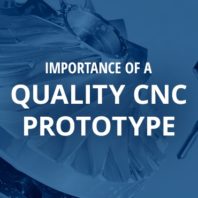Discover the steps of CNC Rapid Prototyping
informsarakhan July 16, 2021Rapid prototyping is the process of generating or manufacturing a dummy product to test its functionality and risk of failure before final production. Rapid prototyping can be accomplished using a variety of methods. Digital CAD/CAM prototypes, fabricated functional prototypes, 3D printed prototypes, CNC machined prototypes are some of the most common methods of rapid prototyping. Among all these methods, CNC rapid prototyping is quite a popular method to develop dummy or functional type rapid prototypes.
The CNC rapid prototyping process is commonly referred to as CNC-RP. CNC rapid prototyping is very popular because of its accuracy, dimensional stability, and consistent quality. However, to achieve high-quality CNC rapid prototyping, it is essential to follow the process meticulously. This article discusses the steps of CNC rapid prototyping to achieve optimal results. Visit also: CNC machine parts
Step-by-Step Process of CNC Rapid Prototyping (CNC-RP)
The steps in the CNC rapid prototyping process are as follows.
– Design Ideation:
Design ideation is the first step in rapid prototyping. During this step, product designers or product engineers create several possible designs for the product. These ideas may include sizing and feature placement, design for manufacturing and assembly (DFMA), design for testing (DFT), etc. Once all the ideas have been created, some of the effective designs move to the next step.
– 3D file generation:
CNC production relies on 3D files such as CAD designs. Therefore, the selected design(s) is converted into a 3D file. The 3D files define all dimensions, features, and aesthetic specifications of the final product.
– Production sequence identification:
Once the 3D file is generated, the machining process to generate each feature is identified. At the same time, the sequence of manufacturing steps is decided to produce the prototype using a seamless CNC machining cycle. Various manufacturing processes such as CNC routing, CNC turning, CNC cutting, CNC milling, CNC drilling, etc. can be involved in the production of CNC machined prototypes.
– CNC Programming:
The sequence of the CNC production processes and the operating instructions for the tools are given to the CNC machine using the CNC program. The programs include G-codes and M-codes that tell the CNC machine which tool to choose, the travel time and distance of the tool, feed rate, depth of cut, etc. All instructions are integrated into the CNC program, allowing CNC rapid prototyping to be automated according to production requirements.
Note: The programming process includes calculations for feed rates, cutting depths, number of passes, tool travel distance, etc. The calculated values are inserted into the G or M codes to create a CNC program.
– Production (prototyping):
Once the CNC program is ready, it is set up in the CNC machine control panel. Once the part is mounted on the tool and the machine is set to run, the seamless CNC machining process takes place. The result of the multiple CNC machining processes performed on the part is the prototype of the desired product. The prototype can be a mannequin or a fully functional look-alike of the work.
Note: For some fully functional prototypes, the individual parts are CNC machined and then assembled. This step is additional for prototypes that include mechanical connections, interconnected components, etc.
– Testing:
Testing is the final and most important step in CNC rapid prototyping. The ultimate goal of rapid prototyping is to test the functionality of the desired product and to check for errors and potential failures. Therefore, CNC prototypes are then tested for functionality, defects, durability, and overall performance.
Once the CNC prototype is tested and approved by the product experts, the final product is put into production. If the prototype does not meet the initial requirements, the second-best prototype idea is selected and CNC machined to verify the same aspects.
Because CNC rapid prototyping is a fairly strategic process and requires skilled personnel for process identification, CNC programming, and CNC operations, these services are best left to experts.
For details, please visit: www.abdultraders.com



